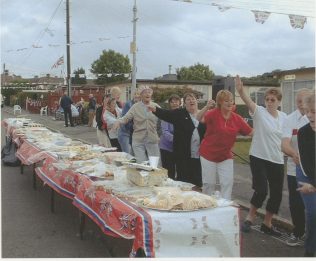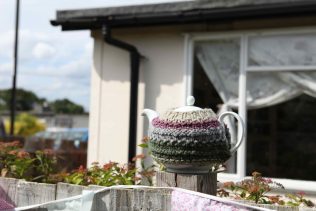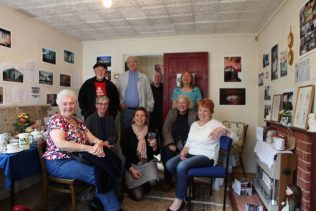Welcome to the Prefab Museum



Prefabs were put up as a temporary solution to ease the housing crisis after the Second World War. The Temporary Housing Programme was unprecedented as the first, and probably the last, time that central government took control of the design, manufacture and supply of homes.
At first looked upon with suspicion by the general public, prefabs soon became highly valued homes due to their amenities and clever design. 156,623 prefabs were manufactured and erected across the UK between 1945-8. The Prefab Museum Archive is the first concerted effort to document the people and communities who lived, and still live, in them to create a national archive and bring together the history, design and locations of these homes.
About the Prefab Museum
The Prefab Museum tells a story that resonates today, of housing shortages – and innovative solutions to them that were enthusiastically embraced by their residents. It also paints a picture of social, domestic, and working class life from 1945 to the present day.
The Prefab Museum was created in March 2014 in a vacant prefab on the Excalibur Estate in south London by Elisabeth Blanchet, photo-journalist, supported by Jane Hearn, community development worker. The museum closed following a fire in October 2014 and since then we have continued to collect and record memories, photographs and memorabilia, online and on the road with the Moving Prefab Museum and Archive project supported by the Heritage Lottery Fund from May 2016 to March 2018. Read more about this successful project that took the Prefab Museum all over the UK. If you can help or have memories to share please contact us.
The project and museum have been ably supported by Selim Korycki, photographer and videographer, and journalist Sonia Zhuravlyova who edited the Prefab Post and transcribed many of the oral histories collected as well as researching the project evaluation. The enthusiasm and support given to the project by the museums and organisations we worked with has been outstanding. Above all, the many people that contribute to the museum with locations, memories and photos has made it as successful as it is.
Elisabeth moved back to her native France in 2016 and subsequently resigned from the Prefab Museum in February 2018. The Prefab Museum continues to be run by Jane Hearn on a voluntary, independent basis.
Contributing to the site
You can add a comment about anything on the website by clicking on the ‘Add a comment’ link at the bottom of each page. You can also submit your own photos, stories or information to the site by email, including your permission to share them on the archive, to prefabmuseum@gmail.com




Comments about this page
Hi, Is there any info on the Hawklsey B8 bungalows that are still standing today on Leycroft Avenue, Tile Cross in Bham?
1953 map of Westcroft Close showing no 64 https://maps.nls.uk/geo/explore/#zoom=18.0&lat=51.55673&lon=-0.21038&layers=173&b=1
Aerial photo from Britain From Above (you need to register to zoom in) https://www.britainfromabove.org.uk/en/image/EAW048560
best wishes, Jane
Westcroft the prefabs in cricklewood numbered 64
Hello sue lake,yes I know Bobby Biggs ,nice chap ,triumph bike ,I used to live half way down the street move from prefabs about 1958 , sparkyjohn1949@gmail.com
In 1965-67 I used to visit my boyfriend Bob Biggs in Westcroft Close NW2. There was a row of prefabs backing onto the rail way. Happy memories of the home. We used to arrive there on a motorbike and he always cut the engine as he turned into the road, so as not to disturb the neighbours.
Without knowing more about the type of prefab roof, I am unable to identify it. The only sure way is to have a recommended asbestos testing service take a sample. with best wishes
Hi
We have a prefab roof in a garden, from 1950s. How can I tell if this is aspestos?
I grew up in a prefab in Lymm, Cheshire. I was two months old when we moved in, it was 1946, and fifteen when we moved out! We had a large front garden a huge back garden and access to the allotments at the back, next to the Bridgewater Canal. You could hear the barges putting along during the day and sometimes at night in the summer months. We had a gas fridge, gas boiler and an immersion heater for hot water when the fire was not lit. They were not very warm in the winter, but I have many happy memories of #8, Racefield Street, Lymm, Cheshire.
Regards from BC Canada.
Thank you John! I discovered the Westcroft Way prefabs on Britain from Above, and put a marker on the photo. You have to register to zoom in, but here is the link. The marker is slightly left of centre https://britainfromabove.org.uk/en/image/EAW048560
best wishes, Jane
I am researching the prospect of using prefabricated materials to assist in the UK’s current housing shortage.
From what I understand the post war prefabricated homes were only built to last 10 years. but I cant find anywhere as to why this was? I am assuming this is due to the quality of materials available and urgency of construction at the time but I cant find anything to confirm this.
Any further information you have on why the buildings were only built to last 10 years would be much appreciated.
Many Thanks, Look forward to hearing from you.
Hi,as a prefab kid it was really good living in one,the one we had was is Cricklewood on railway land the road was called west Croft way,there was a prefab kitchen in the science museum when I walked in not expecting it I went back 60 years ,this must happen a lot in your museum.thank you and well done
Add a comment about this page